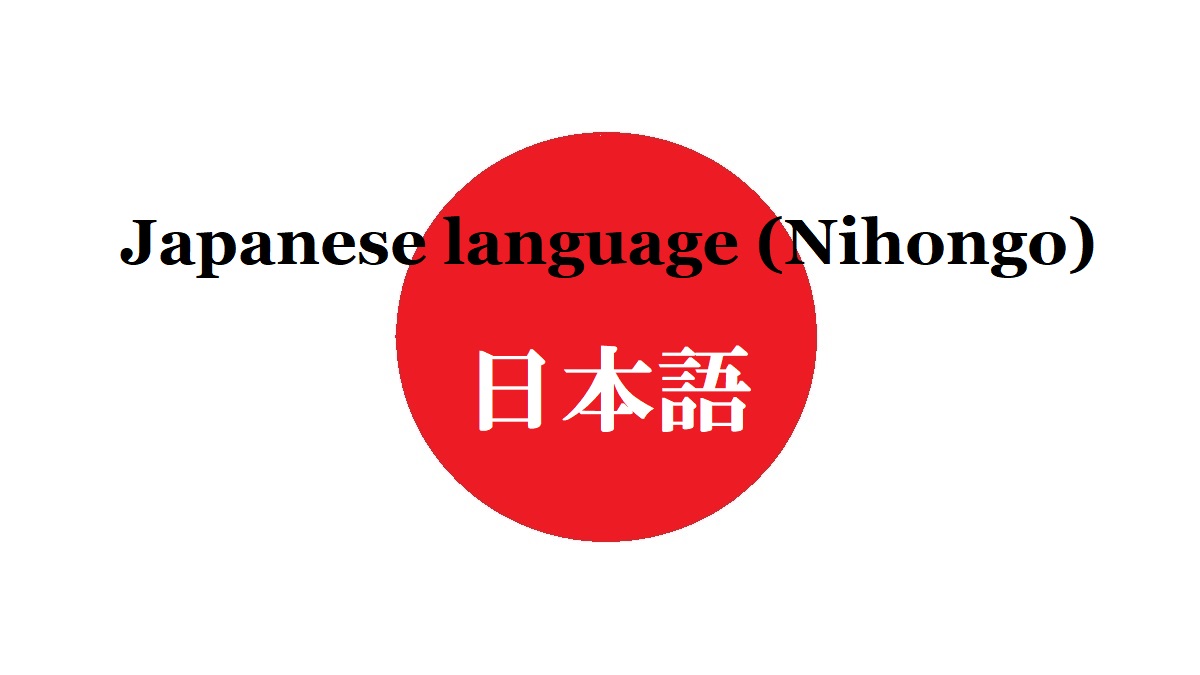Kanji characters
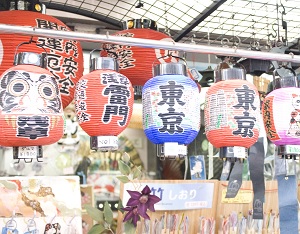
Souvenirs with Kanji characters at Asakusa
Kanji is the character created in China in ancient times and was introduced to Japan in the 5th or 6th century.
It is literally called "Chinese characters" in English.
It is used in China, Hong Kong, Taiwan and Japan.
In Korea, it had been used until the middle of the 20th century but only Korean character is mainly used now.
Around the 14th century BC, basic Kanji characters were created from the hieroglyphic characters in China.
So, each character had the meaning and had a reading.
Kanji is a typical ideogram in the world.
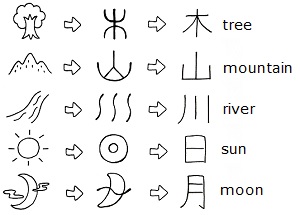
Formation of Kanji characters
Some basic characters were created first.
After that, by combining a few basic characters and parts, a lot of new characters having various meanings were created.
The dictionary compiled in China in the 18th century contains more than 47,000 characters.
And recent dictionaries contain over 100,000 characters.
The variation of Kanji character is overwhelming in the world.
And each character was formed to fit in a square.
So, the text written in kanji character is neat.
Writing kanji characters beautifully is called calligraphy.
It has been an art since ancient times.
By the way, every country doesn't use all of the Kanji characters.
In Japan, a Kanji set with limited characters is organized by Japanese government.
All of them are taught in school.
And newspaper, magazine, book, TV must use only the limited Kanji characters in principle.
For 6 years in elementary school (between 7 to 12 years old), the students learn 1,006 characters.
For 3 years in junior high school (between 13 to 15 years old), the students learn 1,130 characters.
A total of 2,136 characters are the compulsory Kanji for Japanese people.
In addition, when we have a baby and give a name, we can use additional 863 Kanji characters for name.
Therefore, we can use about 3,100 characters of Kanji, Hiragana and Katakana in all for Japanese name.
(When we register the birth of the baby at government office, the name with Kanji character out of above sets is not accepted.)
But when we learn the history and geography of China, we must know some other Kanji characters.
Because, the set of Kanji characters using in China is different from Japan.
We learn these additional characters in daily life as needed.
Kanji is such character set.
Though each Kanji has very complicated form, Japanese people can distinguish the character in a moment.
And, most words by kanji consist of only 1 to 3 characters.
So, the meaning is caught by only watching the form of the characters.
But the word of the other languages using alphabet consists of several characters, and the length varies.
Each character is a phonogram.
So, to understand the meaning, we must trace the order of the characters in the word.
That is the difference of reading between Japanese including kanji and the other languages using alphabet.
Kanji in Japanese sentence
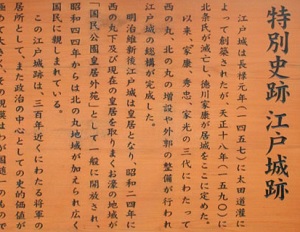
An explanation board in Imperial Palace in Tokyo.
This is the normal Japanese sentence with many Kanji characters.
Each Kanji character has any meaning.
In Chinese, each Kanji has a unique pronunciation.
Japan imported the Kanji, and assigned Japanese word to Kanji corresponding to the meaning.
Because Japanese has inflection, Hiragana as the inflected syllables was added after the Kanji.
The verbs and adjectives of Japanese are written by such combination of Kanji and Hiragana.
On the one hand, many Chinese words were also imported.
And the direct Chinese sounds were also adopted.
Therefore, in Japanese, most Kanji characters have both readings of Japanese and Chinese.
In addition, there are some characters that Chinese pronunciation had changed as the centuries roll by.
Some characters have a few Chinese pronunciations in Japanese, so it makes it increasingly difficult for even Chinese learner using Kanji to learn Japanese.
In the 19th century, Japan promoted modernization.
Many Japanese intellectuals learned the new Western culture, thought, social system, etc.
They created many new words by combining a few Kanji characters so that Japanese people were able to understand new conceptions easily.
Modern China was established in 1949 after WW2.
The formal name of the country includes the Chinese words such as "人民 (Renmin)" (=People) and "共和国 (Gongheguo)" (=Republic).
The words were created by Japan in above times, so that is actually the reverse import of Kanji from Japan to China.
Most basic Kanji characters
Of course, I can't introduce all Kanji characters in this page.
I introduce most basic and frequently used characters.
Most of them are taught by the 1st and 2nd grade of elementary school.
Therefore, these characters are used most frequently.
Probably, you will often find them during the travel in Japan.
Numbers
一 (1), 二 (2), 三 (3), 四 (4), 五 (5), 六 (6), 七 (7), 八 (8), 九 (9), 十 (10), 百 (100), 千 (1,000), 万 (10,000), 数 (number), 全 (all, whole), 半 (half), 有 (exist, posess), 無 (nothing), 円 (yen [Japanese currency unit])
Position
東 (east), 西 (west), 南 (south), 北 (north), 上 (up, over), 中 (in, middle), 下 (down, under), 右 (right), 左 (left), 前 (front), 後 (back), 内 (inside), 外 (outside)
Time, Date
時 (hour, time), 分 (minute), 秒 (second), 年 (year), 月 (month), 日 (day), 週 (week), 朝 (morning), 昼 (afternoon), 夕 (dusk), 晩 (evening), 夜 (night)
曜 (day of week), 日 (Sunday), 月 (Monday), 火 (Tuesday), 水 (Wednesday), 木 (Thursday), 金 (Friday), 土 (Saturday)
春 (spring), 夏 (summer), 秋 (autumn), 冬 (winter)
Country
国 (country), 県 (prefecture), 都 (capital, Metropolis of Tokyo), 府 (prefecture of Kyoto and Osaka), 道 (prefecture of Hokkaido)
市 (city), 町 (town), 村 (village)
道 (road, way), 家 (house), 寺 (temple), 城 (castle), 港 (port), 店 (shop)
Weather, Nature
晴 (fair weather), 曇 (cloudy), 雲 (cloud), 雨 (rain), 雪 (snow), 風 (wind), 氷 (ice)
天 (heaven), 空 (sky), 地 (ground), 日 (sun), 月 (moon), 星 (star), 水 (water), 火 (fire)
山 (mountain), 川 (river), 海 (sea), 湖 (lake), 洋 (ocean), 池 (pond), 島 (island), 原 (field), 森 (forest), 林 (grove), 木 (tree, wood), 草 (grass), 花 (flower, blossom), 葉 (leaf), 桜 (cherry blossom), 石 (stone), 岩 (rock), 砂 (sand), 土 (soil)
田 (rice field), 畑 (vegetable field), 米 (rice), 麦 (wheat), 茶 (tea), 魚 (fish), 肉 (meat)
犬 (dog), 猫 (cat), 牛 (cow), 馬 (horse), 豚 (pig), 羊 (sheep), 鳥 (bird), 虫 (insect)
Person
人 (person, people, human), 男 (male, man), 女 (female, woman), 父 (father), 母 (mother), 親 (parent), 子 (child), 兄 (older brother), 姉 (older sister), 弟 (younger brother), 妹 (younger sister), 友 (friend), 神 (god)
手 (hand), 足 (foot), 顔 (face), 頭 (head), 目 (eye), 耳 (ear), 鼻 (nose), 口 (mouth), 毛 (hair), 首 (neck), 歯 (tooth), 心 (mind, heart)
Adjective
大 (big, large), 中 (middle, inside), 小 (little, small), 新 (new), 古 (old, aged), 旧 (old, former)
白 (white), 黒 (black), 赤 (red), 青 (blue), 黄 (yellow), 緑 (green), 金 (gold), 銀 (silver)
高 (high), 低 (low), 暑 (hot (day)), 涼 (cool), 寒 (cold (day)), 熱 (hot), 冷 (cold), 長 (long), 短 (short), 明 (bright), 暗 (dark), 近 (near), 遠 (far), 少 (little amount), 多 (much amount), 強 (strong), 弱 (weak), 良 (good), 悪 (bad)
Verb
歩 (walk), 走 (run), 止 (stop), 食 (eat), 飲 (drink), 見 (see, look), 聞 (hear, listen), 言 (say), 話 (speak, talk), 行 (go), 来 (come), 帰 (return), 乗 (ride, board), 思 (think, remember), 考 (think, consider), 知 (know), 答 (answer), 読 (read), 書 (write), 作 (make), 売 (sell), 買 (buy)
Kanji words for travel around Japan
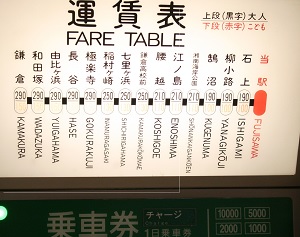
Kanji is the main character in the town.
At a station of Enoden railway.
When you travel around Japan, you will often find the following Kanji words.
Please check them.
Airport
空港 (airport), 国際線 (international airline), 国内線 (domestic airline), 出発 (departure), 到着 (arrival), 入国 (immigration), 出国 (embarkation), 税関 (customs), 検疫 (quarantine), 両替 (exchange), 免税 (duty free), 旅券 (passport)
Railway
鉄道 (railway), 新幹線 (Shinkansen), 駅 (station), 特急 (limited express), 急行 (express), 快速 (rapid train), 普通 (local train), 指定席 (reserved seat), 自由席 (non-reserved seat), 地下鉄 (subway), 乗車券 (ticket), 運賃 (fare), 改札口 (ticket wicket)
Other words
バス (bus), タクシー (taxi), 船 (ship, boat), 駐車場 (parking), 高速道路 (expressway), 国道 (national road), 徒歩 (on foot), 案内所 (information bureau), ホテル (hotel), 旅館 (ryokan (Japanese-style hotel)), 民宿 (minshuku (Japanese-style inn)), 入口 (entrance), 出口 (exit), 非常口 (emergency exit), 料金 (fee), 有料 (paid), 無料 (free), 銀行 (bank), 郵便局 (post office), 交番 (koban, police box)

